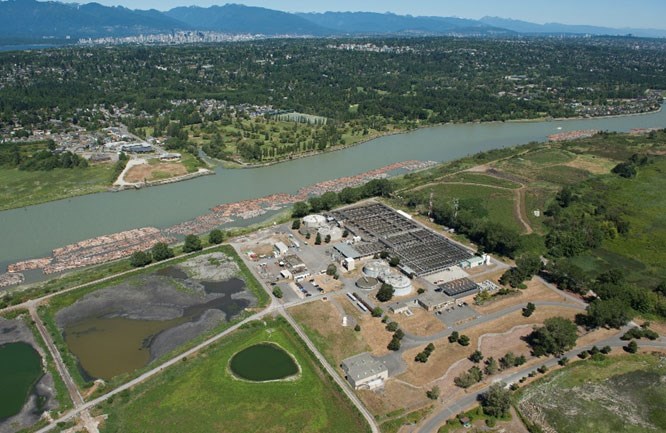The new Iona Wastewater Treatment Plant in Richmond should be more environmentally-friendly and resistant to potential climate-change induced flooding and rises in sea level, according to the city.
The new wastewater treatment plant, which will be built on the site of the current plant on Iona Island, is in its concept phase, with design and construction slated to begin next year.
The upgrade should be completed by the end of 2030.
At city council's public works committee this afternoon, a vote will be taken on endorsing several upgrade suggestions for Metro Vancouver, which, if approved, would then be forwarded to the regional body for consideration.
The current plant only has a primary level of treatment, which removes anything that settles or floats. Secondary treatment processes water at a microbiological level, removing both suspended solids (not settled) and dissolved materials.
Tertiary treatment is an extra level of processing, and can help remove nitrogen and phosphorous nutrients, thereby protecting waters from algae blooms, according to a Metro Vancouver report.
While the new plant is required under federal law to have a minimum of secondary level wastewater treatment, the city wants the plant to have a tertiary level of treatment.
Last September, Metro Vancouver approved tertiary treatment for the new North Vancouver sewage plant.
The city also wants Metro Vancouver to find ways to contribute to current provincial and federal efforts to revitalize Sturgeon Bank through the Steveston and Iona restoration projects, as well as include discussions about fish and wildlife habitat enhancements in ongoing stakeholder events.
Education programming and interpretation amenities should also be included at the new facility, according to the city, which would promote the ecological values of those habitat areas.
The city wants Metro Vancouver to discuss the new facility’s waste recovery initiative with stakeholders, so that water from the plant could be used for irrigation, for example.
In addition to being more environmentally-friendly, the new facility should also be resistant to flooding and rises in sea level that could result from climate change.
For example, the city is asking Metro Vancouver to consider raising the land elevation or implement flood protection infrastructure.
And when it comes to public-use infrastructure, the city is asking the regional body to maintain and enhance pedestrian access to Iona Beach Park.
For example, the city suggests building trails, so the beaches to the south and west of the new plant could be more accessible.
Metro Vancouver should also work with the city and YVR in order to build protected cycling facilities along Ferguson Road and Iona Island Causeway.
Any potential odour issues related to the new plant should also be investigated, according to the city.
The committee will vote on endorsing the suggestions this afternoon.



